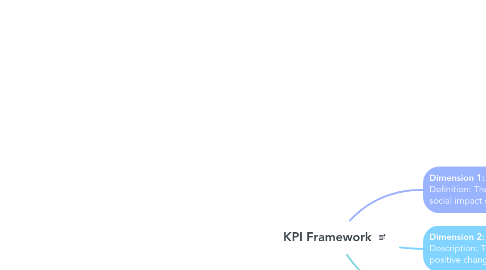
1. **Dimension 1: Quality** Definition: The quality of TCF's positive social impact on beneficiaries' lives
1.1. **Indicator 1.1: Student performance** Description: Internal and external assessment scores of students at TCF
1.1.1. **Metric 1: Federal APR (Grades 9,10)** Description:** Federal Board Results for grades 9 & 10
1.1.2. **Metric 2: External Evaluation APR (Grades 2,5,6,8)** Description: External evaluation scores for grades 2, 5, 6, and 8
1.1.3. **Metric 3: School APR** Activity: Average examination results for all subjects Subactivities: Exam Governance
1.1.3.1. **Metric: Student Attendance** Activities: Student health, nutrition, water, eyecare, healthcare
1.1.3.2. **Metric: Parental Engagement** Activity: Parent Teacher Meetings Aagahi adult literacy program
1.1.3.3. **Metric: Enabling Environment** Books, supplies, uniforms, complete instructional hours
1.1.3.4. **Indicator I.1.b: Teacher performance** Description: Teacher availability and quality of work.* If the teacher is present & performing well, then the WSE/Principal results will be good as well. * Current weightage 15%
1.1.3.4.1. **Indicator I.1.b.i Teacher availability** Description: Teacher presence in the classroom is essential for effective performance
1.1.3.4.2. **Indicator I.1.b.ii Teacher Quality** Description: Teacher quality is a major contributor to effective performance
2. **Dimension 2: Access** Description: The agents of positive change TCF has created
2.1. **Indicator II.1: Student Enrolment** Description:The scale of students enrolled at TCF
2.1.1. **Indicator II.1.a Mission Alignment** Description: Alignment with TCF mission and vision of students enrolled
2.1.1.1. **Metric: Enrollment from low income households** Description: The poverty rating of households from which enrollment is done
2.1.1.2. **Metric: Gender parity/Girls enrollments percentage** Description: The percentage of girls vs. boys enrolled in co-educational schools at TCF
2.1.2. **Indicator II.1.b Operational utilization** Description: The operational utilization of TCF school during final year examinations
2.1.2.1. **Metric 1: Community mobilization (student recruitment drives)** Description: community engagement visits conducted by TCF staff
2.1.2.1.1. Metric: Community visit register
2.1.2.1.2. Metric: CDU initiatives
2.1.2.1.3. Metric: Inschool community programs
2.1.2.2. **Metric 2: Cluster completion ratio**
2.1.3. **Indicator II.1.c Operational Capacity** Description: the structural capacity of TCF infrastructure
2.1.3.1. **Metric: Structural capacity** Activities/Processes - Network planning - Demand Analysis
2.1.3.1.1. Metric: New Units
2.1.3.1.2. Metric: Afternoon shifts
2.1.3.2. Metric: School repair & maintenance
2.2. **Indicator II.2: Student Learning Journey** Description: The longevity of the student journey at TCF (i.e. student aging and transistion rates)
2.2.1. **Indicator II.2.1: Transition rates from primary to secondary to higher secondary** Description: Longevity of students in the TCF system
2.2.2. **Indicator II.2.2: Dropout %** Description: The average dropouts for all grades for students in the TCF system
3. Dimension 3: Sustainability
3.1. **Cost efficiency**
3.1.1. **Cost per child** Definition: Total operational cost divided by students served
3.1.1.1. **Key Cost Drivers** 1. Administrative expenses 2. Books, Copies, Uniforms, and Others 3. Depreciation 4. Direct Expenditure (including salaries) 5. Marketing, Fundraising, and Outreach 6. Other School Expenses 7. Research and Development 8. School Repair and Maintenance 9. School Supervision and Monitoring 10. School Vehicle Running and Maintenance 11. Teacher’s Training
3.1.2. **Cost per Unit** Definition: The operational cost at the school level.
3.1.2.1. **Cost per program** Compares expenditures across different educational models such as Flagship, FAS, and others
3.1.2.2. **Cost per region** Regional analysis of cost per unit
3.1.2.3. **Time based analysis** Assessing cost per unit on a monthly or quarterly basis
